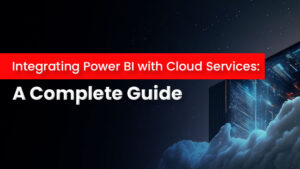
3 Ways Microsoft Sentinel Boosts Your SOC’s Efficiency
Introduction We live in an age where companies worldwide are confronted with cyber threats daily; therefore, the security operations center (SOC) is vital. However, since
Limited Time Offer! Upgrade Your Skills with the Latest Tech Courses – Premium Annual Plan for Only $160 $99 – Use Code: “PREMIUM99”

Introduction We live in an age where companies worldwide are confronted with cyber threats daily; therefore, the security operations center (SOC) is vital. However, since

Introduction In today’s digital age, cyber threats are a significant concern for individuals, businesses, and governments alike. Cyberattacks can cost organizations millions and erode trust

Introduction In today’s data-driven business environment, leveraging real-time insights and advanced analytics is crucial for maintaining a competitive edge. Power BI, Microsoft’s leading data visualization
Table of Contents
Companies worldwide are committed to reducing their IT carbon footprint, championing a more sustainable future through efficiency and cost optimization initiatives. Cloud sustainability is not only about reducing the environmental impact of cloud usage but also about making smart business decisions that align with corporate values, adhere to regulatory requirements, and enable the pursuit of long-term business goals. To understand the impact of cloud computing on carbon emissions, precise measurement, trustworthy data, and robust tools are essential.
In this blog, we will explore the benefits of Azure Carbon Optimization and Microsoft Azure emissions insights and how the FinOps framework can guide your business through the complexities of carbon emission reduction to help achieve your environmental and financial goals.
Ready to take your organization’s sustainability efforts to the next level with Microsoft Azure and FinOps best practices? Explore the comprehensive insights provided by Azure Carbon Optimization and Microsoft Azure emissions insights to effectively track, analyze, and optimize your carbon emissions from Azure usage. Visit ipspecialist.net now!
FinOps is a methodology that promotes a culture of financial accountability and optimization in cloud environments. It provides a framework with best practices for areas like:
By implementing FinOps, you gain control over your Azure spending and ensure you’re getting the most value out of your cloud investment.
Enterprises encounter noteworthy obstacles, such as cloud waste, the predicament of unclear where to start, which can impede initiatives, and cloud cost hurdles for novice and seasoned FinOps groups. Labeling Kubernetes and tagging resources could be haphazard. These are the various obstacles that companies must overcome, and FinOps best practices play a big part in this.
Above all, organizations that proactively address environmental issues and reduce their carbon footprint will be better positioned for long-term success, especially in a business landscape where sustainability is increasingly important.
In the current business environment, sustainability has emerged as a key priority for enterprises all over the world. Cloud computing presents an opportunity as well as a challenge to businesses looking to lessen their environmental effect. One of the top cloud platforms, Microsoft Azure, provides cutting-edge tools and solutions to assist companies in reaching their sustainability objectives and maximizing expenses and productivity through FinOps best practices.
Organizations can monitor, comprehend, and optimize their carbon emissions from Azure usage with the help of Azure Carbon Optimization and Microsoft Azure emissions analytics. By providing deep insights into emissions data, these solutions enable engineering, IT, and data analysis teams to make well-informed decisions to minimize their carbon footprint.
Furthermore, for firms hoping to comply with legal requirements and industry norms, IT sustainability initiatives must be coordinated with ESG laws. With Microsoft’s ESG reporting and sustainability management solutions, companies can better understand their environmental effect and stay in compliance with regulations by gathering and managing ESG data.
Through the use of FinOps best practices with Azure sustainability technologies, entities may cultivate a climate of responsibility, effectiveness, and control throughout their cloud operations. In a business environment where sustainability is a key consideration, this strategy positions organizations for long-term success by promoting innovation, cutting operational costs, and optimizing carbon emissions.
In conclusion, achieving sustainable growth with Azure and FinOps best practices is about reducing carbon emissions and embracing a culture of environmental responsibility and innovation. By leveraging tools like Azure Carbon Optimization and Microsoft Azure emissions insights, alongside integrating FinOps principles, organizations can drive meaningful change in their cloud practices, transforming them into a force for sustainability. Through data-driven insights and proactive measures, businesses can mitigate their environmental impact and ensure compliance with ESG regulations, setting the stage for a greener, more responsible future.
These tools provide organizations with deep insights into their carbon emissions from Azure usage, enabling them to effectively identify areas for optimization and reduce their environmental footprint.
ESG regulations set environmental, social, and governance standards, driving organizations to adopt sustainable IT strategies to comply with reporting requirements and industry standards.
FinOps principles foster a culture of accountability, efficiency, and governance across cloud operations, enabling organizations to optimize carbon emissions while driving innovation and cost savings.
© 2024 All rights reserved | Privacy Policy | Terms and Conditions | Sitemap | Cookie Policy




